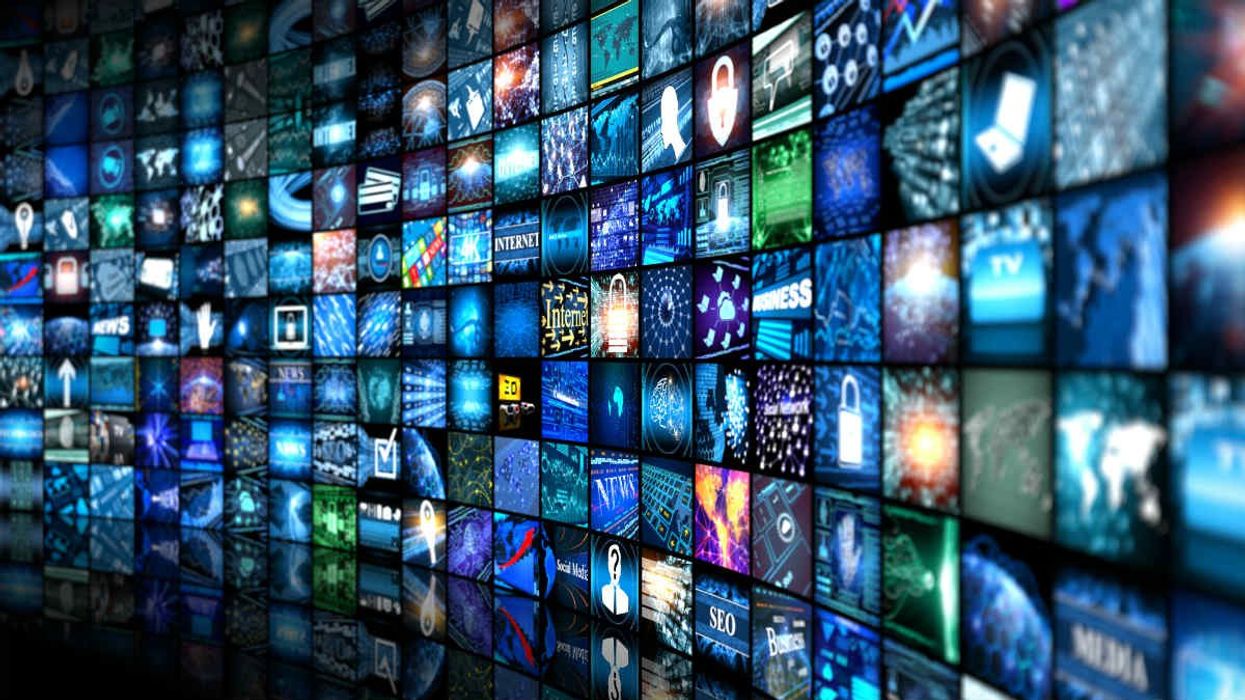
Vertigo3d/Getty Images

Nobody watches television any more — not even streaming. A quick Google search on the state of streaming yields headlines like: “Streaming wars over.” “The golden age of streaming over.” “Production comes to grinding halt."
Shows are being canceled en masse. “Infinite shelf space” is all well and good, but audiences don’t have unlimited attention spans. One streaming executive quoted in Vulture says, “It is a f***king disaster.” And then there’s the never-ending stream — no pun intended — of think pieces about what the successes and failures of streaming mean.
On the one hand, there’s not enough. Enough what? Enough of anything. We don’t have enough representation. There aren’t enough queer storylines. Are there enough people of color in the writers’ room? Of course not! Otherwise, we’d have more true-to-life representations of Somali daily life in our straight-to-streaming one-hour dramas.
And then, on the other hand, there’s too much. Everyone has choice paralysis. Or worse, it’s not a “real choice” at all because everything is mass-produced schlock.
Every think piece is, in its own way, an accurate diagnosis. The golden age of binge-watching is long behind us. It might have peaked nearly a decade ago, with shows like "Orange is the New Black” or the arrival of “The Office” on Netflix. Or maybe it got its second wind during the COVID-19 pandemic when everyone gathered around their laptops to watch “Ted Lasso,” which seemed best served with a side of “legally mandated not to leave one’s home.”
Does a phrase like “Netflix and chill,” which itself implies a sort of obsolescence of streaming, a demotion to background noise, have any resonance any more? Nobody is chilling these days, and we’re certainly not doing it to a soundtrack of Netflix. If streaming is dead, save for the odd success story that pops up here and there — maybe “Succession” — what’s next for television?
Is it the podcaster and her podcast, simulating the experience of friendship? The X poster or TikTok influencer as performance artist? Digitally native personality cults like Milady? Trend-chasing by trying every new meal, diet, lifestyle, or product that our algorithm serves us? A return to real-life hanging out, physical world scenes, as the New York Times or Wunderman Thompson have described?
While any of these may have eclipsed the TV show, it seems that TV hasn’t breathed its last breath. At least, not yet. The experience of watching TV has subtly snuck back, rebelling against the constraints (or lack thereof) of streaming platforms. Many of us are watching TV on TikTok.
And I don’t mean that TikTokers are simulating TV with ultra-creative, high-production value videos. The platform has somehow managed to bring back the experience of not just television watching but channel surfing. These days, my “For You” page is a mix of sponsored content for restaurants like Dave’s Hot Chicken or Culver’s, classic influencer fare, and sitcoms in three-, five-, or 10-minute increments. It’s just like watching TV. I jump into a show at a random point in the episode, series, and season, and I’m hooked.
It doesn’t matter if the show is garbage or not, either. I’m already in a TikTok trance. I learn hard lessons, like that “Friends” and “Modern Family” haven’t aged well, but I just watched an entire episode on some random Chinese lady’s channel. Occasionally, it’s punctuated with a clip of someone named Martina Herrera telling me that she and Enrique Iglesias have been having an affair for years and now he’s cyberstalking her.
There is this sense on the feed that we’re all being served the same thing. Sometimes, we toggle to the account that posted the first clip we saw and see the show to completion right then and there. Other times, we wait for the algorithm to bring us back to parts two or three or four, not necessarily in that order.
We all leave the same comments on part three of an episode of “The Good Doctor” (which recently enjoyed a moment of virality, thanks to TikTok) or “Chicago Med” or “Call the Midwife.” What episode is this? What happens? I can’t believe she was so nice to that Indian lady, given her medical problem. The compassion. I’m crying.
If a clip shows something upsetting, you can count on the familiar, “Anyone else hiding out in the comments?” We warn one another if a dog gets hurt and comfort those who didn’t check the comments early enough. We didn’t pick “Call the Midwife” or the episode of it that we landed on. We didn’t pick the scene. But we’re all here. There’s a community in the comments, no matter how fleeting. And there’s a certain joy in not having had a choice.
It’s more than just not having to choose that makes it special, though. It’s more than just being reacquainted with making do with what you have in your immediate environment. In part, it’s because it’s not a bubble. Monoculture is sneaking back in. The invisible hand of TikTok, whatever that might be — an algorithm, the Chinese Communist Party, or just ByteDance, TikTok’s parent company — brings users from all walks of life together. All of us enjoying the same 11-year-old TV show, just like it’s new.
That’s all that’s going on. We’re just watching TV.
Katherine Dee
Contributing Editor, Return